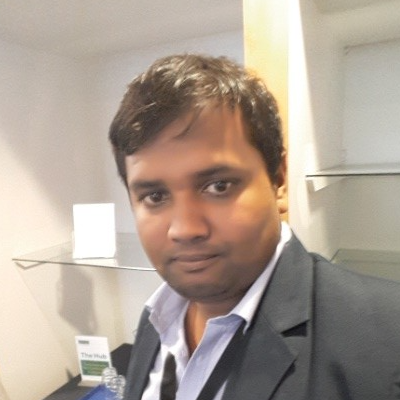Overview
- Start dateOctober
- DurationMSc: Full-time one year Part-time up to three years
- DeliveryTaught modules 40%, Group project (or dissertation) 20%, Individual project 40%
- QualificationMSc
- Study typeFull-time / Part-time
- CampusCranfield campus
Who is it for?
This course is suitable for graduates with engineering, maths, sciences or related degrees keen to pursue careers in industrial maintenance management (including planning, scheduling and control) and develop relevant technologies for maintenance engineering. It is relevant to both fresh graduates and graduates currently working in industry keen to extend their qualifications and knowledge in this field alongside individuals with other qualifications who possess considerable relevant industry experience.
For employers interested in Degree Apprenticeships, please explore our Level 7 Apprenticeship MSc in Through-life System Sustainment.
Why this course?
The MSc in Maintenance Engineering and Asset Management is specifically aimed at developing your learning in the latest technologies and management strategies of maintenance and assets, with direct application the workplace. The main aim of the course is to deliver fundamental knowledge and a comprehensive set of skills to produce experts capable of transforming an organisation’s maintenance culture and strategy. It addresses the significant need for leaders in asset management and maintenance who can plan the care of long life, high value assets for availability and performance.
This MSc is unique in the advanced technical facilities available to you as a student as well as the practical application and experience you will gain as part of the taught content. You will take part in guest lectures from world leading organisations, invited to deliver talks about current exciting industrial practiced in the sector. You will also be exposed to industrial and academic research opportunities with world leading researchers as part of your group and individual research projects.
As a student, you will develop the skills to:
- Identify critical assets for maintenance prioritisation.
- Prioritise maintenance tasks/activities during maintenance planning.
- Identify leading and lagging Key Performance Indicators (KPIs) for continuous improvement of maintenance practices.
- Develop methods to quantify and monitor the leading and lagging KPIs.
- Assess the regular and sudden failures in machines and structures and determine their root cause.
- Evaluate the suitability of inspection techniques in the context of real operation failures.
- Elaborate on the potential risks in considered maintenance routines and recommend mitigation activities.
- Assess the impact of technical and financial management on asset availability.
- Solve the technical complexities in implementing new technologies to devise effective maintenance planning.
- Evaluate the legal implications of a suggested maintenance routine and critically analyse its impact on health, safety and environment.
- Build hands on expertise to use the tools and the techniques in implementing asset inspection and planning.
- Prove the confidence in proposing customised maintenance routines in comparison with the OEM's suggested routines.
- Develop strategy based maintenance frameworks suitable to any given industrial scenario.
The course is uniquely applied and practical by nature, aimed at availability of strategic assets. As a graduate you will be qualified to transform the current industry culture of an OEM’s based maintenance routines into strategy based maintenance.
Informed by Industry
The Maintenance Engineering and Asset Management MSc is designed to meet the training needs of industry and benefits from strong input from experts in the sector. In particular the guidance provided by the TES Council (including organisations such as Rolls-Royce, MoD, BAE Systems, Babcock International and Leonardo) as well as our industrial advisory board members (Petrofac, Siemens, Network Rail, Rolls-Royce)have been instrumental in developing cutting-edge modules and course content. The industrial advisory board (IAB) is co-led by Jonathan Neal from Rolls Royce.
Students who have excelled in their performances are recognised through course awards which are presented on Graduation Day by high profile organisations and individuals, and are often sponsored by our industrial partners.
Course details
The course will include eight taught compulsory modules, which are generally delivered from October to March.
The modules include lectures, tutorials and lab-based activities. These activities are designed to give you hands on knowledge and theory so as not to rely on technicians for machinery technical issues and are assessed through practical work, case studies, essays, presentations and tests. These provide the 'tools' required for the group and individual projects.
For any informal enquiries regarding technical course content, please contact:
Dr Muhammad Khan
Tel: +44 (0) 1234 754788
Email: Muhammad.A.Khan@cranfield.ac.uk
Course delivery
Taught modules 40%, Group project (or dissertation) 20%, Individual project 40%
Group project
The group project experience is highly valued by both students and prospective employers where teams of students work to solve an industrial problem. The project applies technical knowledge and provides training in teamwork and the opportunity to develop non-technical aspects of the taught programme. Part-time students can prepare a dissertation on an agreed topic in place of the group project.
Industrially orientated, our team projects have support from external organisations. As a result of external engagement, Cranfield students enjoy a higher degree of success when it comes to securing employment. Prospective employers value the student experience where team working to find solutions to industrially based problems are concerned.
Individual project
Students select the individual project in consultation with the Course Director. The individual project provides you with the opportunity to demonstrate their ability to carry out independent research, think and work in an original way, contribute to knowledge and overcome genuine problems.
Modules
Keeping our courses up-to-date and current requires constant innovation and change. The modules we offer reflect the needs of business and industry and the research interests of our staff and, as a result, may change or be withdrawn due to research developments, legislation changes or for a variety of other reasons. Changes may also be designed to improve the student learning experience or to respond to feedback from students, external examiners, accreditation bodies and industrial advisory panels.
To give you a taster, we have listed the compulsory and elective (where applicable) modules which are currently affiliated with this course. All modules are indicative only, and may be subject to change for your year of entry.
Course modules
Compulsory modules
All the modules in the following list need to be taken as part of this course.
Industrial Maintenance
| Aim |
To emphasise the significance of effective maintenance. |
|---|---|
| Syllabus |
• Importance of Maintenance. • Definition of Maintenance and objectives. • Maintenance Approaches and Customisation. • Maintenance Optimisation. • Future Trends in Maintenance. • Influence of IoT on Maintenance Strategy. • Industrial case studies and issues with customisation |
| Intended learning outcomes |
On successful completion of this module you should be able to: 1. Assess the significance of maintenance for an industry. 2. Analyse the key factors for an effective maintenance. 3. Distinguish the principles of preventive maintenance. 4. Prepare a suitable maintenance procedure for real industrial scenario. 5. Evaluate the feasibility of strategy based maintenance. |
Asset Management
| Aim |
To provide introductory knowledge and coverage of Asset Management and highlight its business value within an organisation, as well as the role of Maintenance and Technology within Asset Management, enabling students to develop a practical knowledge of Asset Lifecycle Management, including Strategy, Planning, and Implementation, including Industry 4.0 technology enablers and Asset Management Services business models. |
|---|---|
| Syllabus |
• Introduction to asset lifecycle management. • Organisational context. • Asset management leadership. • Maintenance within asset management. • Standards for asset management. • Asset management policy and planning. • Technology enablers and Industry 4.0. • Asset management operations. • Asset life-cycle costing. • Business models and services. • Industry case studies. |
| Intended learning outcomes |
On successful completion of this module you should be able to: 1. Distinguish the key concepts of asset management, its business value for an organisation and the role of maintenance 2. Examine the structure of asset life-cycle management. 3. Assess and analyse current developments in technology (e.g. Industry 4.0 technologies, such as Internet of Things, Data Management and Analytics), and assess them. 4. Evaluate asset management business models and formulate value propositions. 5. Formulate asset management and application requirements and skills into effective action plans, through practical case studies from different sectors. |
Probability and Statistics in Risk and Reliability Engineering
| Aim |
To introduce the basic principles and fundamentals techniques of risk and reliability analysis and their potential applications to different engineering problems. |
|---|---|
| Syllabus |
• Introduction and Fundamentals of Risk Management and Reliability Engineering. • Risk Management Process. • HAZOP Analysis. • Mathematics for Risk Studies and Basic Reliability Calculations. • Probability Distributions- online delivery. • Reliability Block Diagrams and Systems Reliability. • Time-based Systems Reliability- online delivery. • Quantitative Reliability Analysis Modelling- online delivery. • Consequence assessment, Risk Control and Decision Support Systems. • Risk Control and Decision Support Systems. • Insurance, Certification and Technology Qualification of Engineering Systems. |
| Intended learning outcomes |
On successful completion of this module you should be able to: 1. Analyse the concepts and principals of risk and reliability engineering and their potential applications to different engineering problems. 2. Assess and analyse appropriate approaches to the collection and interpretation of data in the application of risk and reliability engineering methods. 3. Evaluate and select appropriate techniques and tools for qualitative and quantitative risk analysis and reliability assessment. 4. Evaluate failure distributions, failure likelihood and potential consequences 5. Develop solutions for control/mitigation of risks. |
Failure of Engineered Assets
| Aim |
To provide an understanding of why materials and structures fail and how failure conditions can be predicted in metallic and non-metallic components and structures. |
|---|---|
| Syllabus |
• Definition of failure, complexities in defining failures at different levels and scenarios. • Overview of failure in mechanical and electrical components, systems and assets. • Failure of materials and structures including Atomic insight of damage in materials, stress concentration, critical energy release rate, Griffiths approach, stress intensity and fracture toughness standards and tutorials. • Fatigue in structures and machine components, Paris Law, Crack propagation and useful life estimation. • Asset Failures, system and sub-system interdependencies, fault and usage management systems, Economic vs. Severity matrix for decision making. • Failure analysis techniques and Tutorials : FMEA, FMECA, FTA, RCFA. |
| Intended learning outcomes |
On successful completion of this module you should be able to: 1. Appraise engineered asset failures and its complexities in defining at different levels and scenarios. 2. Explain the principles of Linear Elastic Fracture Mechanics (LEFM) in structures and demonstrate their application to cracks in brittle, ductile and fibre composites through calculation of static failure conditions. 3. Apply fracture mechanics to failure of cracked structures under cyclic loads and evaluate and predict service lives of structures. 4. Assess system and sub-system interdependencies to decide asset failure. 5. Evaluate asset failures by using failure analysis techniques. |
System Availability and Maintainability
| Aim |
|
|---|---|
| Syllabus |
• Concept and definitions for system effectiveness. • Mean Time between Failure (MTBF) and Mean Time to Repair (MTTR) • Failure rate and distribution • FMECA and FTA techniques • Reliability Centred Maintenance (RCM). • Human Factors Integration (HFI) • Testing and Evaluation • Data collection and management/interpretation of data. |
| Intended learning outcomes |
On successful completion of this module you should be able to: 1. Examine Availability, Reliability & Maintainability (A,R&M) and evaluate the influences on equipment availability and the particular influence of logistics. 2. Analyse the measures of A,R&M, how they are manipulated and applied and how their delivery can be assured. 3. Evaluate the A, R&M and Supportability (A,R,M&S) techniques used during concept, design, development, demonstration, production and trials. 4. Use of data-driven technologies to examine evaluation, test and system effectiveness and its assurance. 5. Examine the management issues for A,R&MS in providing operational availability. |
Health Monitoring and Inspection
| Aim |
|
|---|---|
| Syllabus |
• Component failure analysis. • Inspection and non-destructive inspection techniques. • Data acquisition, analysis, and management. • Advanced maintenance techniques. • Health monitoring case studies. |
| Intended learning outcomes |
On successful completion of this module you should be able to: 1. Examine applicability of failure analysis techniques on practical scenarios. 2. Estimate degradation or failure mode from visible or measured inspections. 3. Evaluate the suitability of inspection or monitoring techniques for different machine or component failures. 4. Design feasible health monitoring architectures, with appropriate acquisition parameters and data flows. 5. Formulate advanced maintenance strategies. |
Diagnostics and Prognostics
| Aim |
|
|---|---|
| Syllabus |
• Introduction to the Diagnostics and the Prognostics. • Computational tools to collect, process and analyse sensors data - Hand's on session on Matlab and Signal Express. • Hand's on sessions on Real machine test setups for delivering details on diagnostics sensors, acquisitions and health states. • Raw data analysis and signal processing: Challenges Data Driven, Model Driven and Hybrid Diagnostics and Prognostics Remaining useful life estimation. • Framework of Asset Health diagnostics and prognostics Industrial case studies. |
| Intended learning outcomes |
On successful completion of this module you should be able to: 1. Assess the benefits of key concepts and techniques for maintenance planning, diagnostics and prognostics and health assessment. 2. Evaluate activities to enable the avoidance of deterioration by identifying current Diagnostic and Prognostic technologies, and other technologies. 3. Analyse how diagnostic and prognostic can assist with better intervention timing and content containing the deterioration. 4. Create diagnostics and prognostics framework for asset health. 5. Evaluate the remaining useful life by using the elements of asset health assessment framework. |
Maintenance Planning, Scheduling and Control
| Aim |
To highlight the feasibility of effective maintenance management (encompassing planning, scheduling and control) of industrial assets. |
|---|---|
| Syllabus |
• The principles of work planning, work scheduling and work control in maintenance management. • Asset and facilities maintenance requirements planning. • Maintenance resources and capability planning. • Inventory and supply chain management. • Human Factors in Maintenance. • Optimising Scheduled, Unscheduled and Advanced Maintenance Programmes, for example, Condition-Based Maintenance (CBM) and predictive Maintenance (PdM). • Financial control in maintenance. • Maintenance Management Systems. • Lean maintenance. • Industrial case studies. • Identify critical assets for maintenance prioritisation. • Prioritise maintenance tasks/activities during maintenance planning. |
| Intended learning outcomes |
On successful completion of this module you should be able to: 1. Distinguish the principles of maintenance planning, scheduling, and control in maintenance management. 2. Identify leading and lagging Key Performance Indicators (KPIs) and quantify them using digital/IoT technologies for continuous improvement of maintenance practices. 3. Assess the impact of schedule and non-schedule OEM's suggested maintenance routines. 4. Propose maintenance routines suitable to industrial environment. 5. Assess the technical feasibility and risks involved in strategy-based maintenance routines. |
Teaching team
You will be taught by industry-active research academics from Cranfield with an established track record, supported by visiting lecturers from industry. To ensure the programme is aligned to industry needs, the course is directed by an Industrial Advisory Committee. The Course Director and Admissions Tutor for this programme is Dr Muhammad Khan.
Accreditation
We are in the process of gaining accreditation from Institute of Asset Management (IAM), British Institute of Non-Destructive Testing (BINDT) and Institution of Mechanical Engineers (IMechE).
Your career
This qualification takes you on to a wide range of careers involving maintenance engineering and asset management.
Past graduates of this course have gone into roles including:
- Reliability Engineer
- Asset Engineer
- Senior Consultant
- System Engineer
Companies that have employed our graduates include:
- Boeing
- UK Health Security Agency
- Network Rail
- SNC-Lavalin Atkins Transport Consulting & Advisory
Cranfield’s Career Service is dedicated to helping you meet your career aspirations. You will have access to career coaching and advice, CV development, interview practice, access to hundreds of available jobs via our Symplicity platform and opportunities to meet recruiting employers at our careers fairs. Our strong reputation and links with potential employers provide you with outstanding opportunities to secure interesting jobs and develop successful careers. Support continues after graduation and as a Cranfield alumnus, you have free life-long access to a range of career resources to help you continue your education and enhance your career.
Part-time route
We welcome students looking to enhance their career prospects whilst continuing in full-time employment. The part-time study option that we offer is designed to provide a manageable balance that allows you to continue employment with minimal disruption whilst also benefiting from the full breadth of learning opportunities and facilities available to all students. The University is very well located for visiting part-time students from all over the world and offers a range of library and support facilities to support your studies.
As a part-time student you will be required to attend teaching on campus in one-week blocks, for a total of 3-4 blocks over the 2-3 year period that you are with us. Teaching blocks are typically run during the period from October to March, followed by independent study and project work where contact with your supervisors and cohort can take place in person or online.
We believe that this setup allows you to personally and professionally manage your time between work, study and family commitments, whilst also working towards achieving a Master's degree.
How to apply
Click on the ‘Apply now’ button below to start your online application.
See our Application guide for information on our application process and entry requirements.
Cranfield University is one of two universities in the world that offer a Maintenance Engineering course. I chose to study at Cranfield University due to its specialities in aviation research and strong relationships with the industry.
A highlight from my time at Cranfield has been the international connections I have made, as I have met students from different nationalities.
I also really enjoyed working on the student projects (GP and IRP), both projects have given me insight and hands-on experience into how to implement digitalisation in maintenance.
I chose to study at Cranfield University as it offered coursed related to my job field and could enhance my skills in decision-making and leadership.
A highlight from my time at Cranfield has been working on my thesis project as it has elevated my understanding of strategies, which will aid my decision-making skills.
















